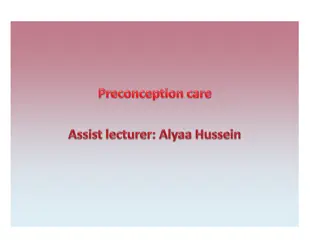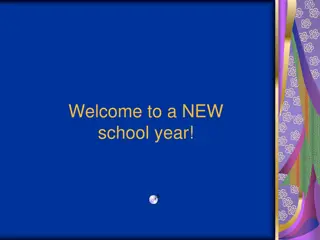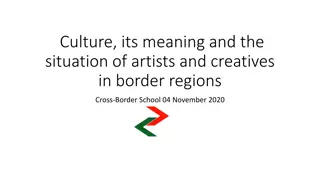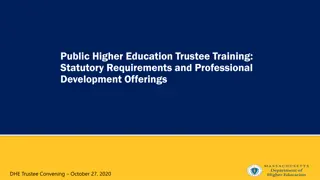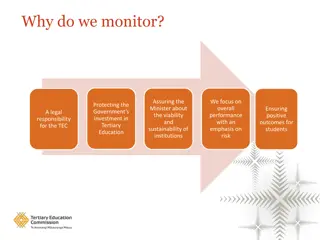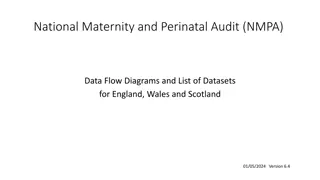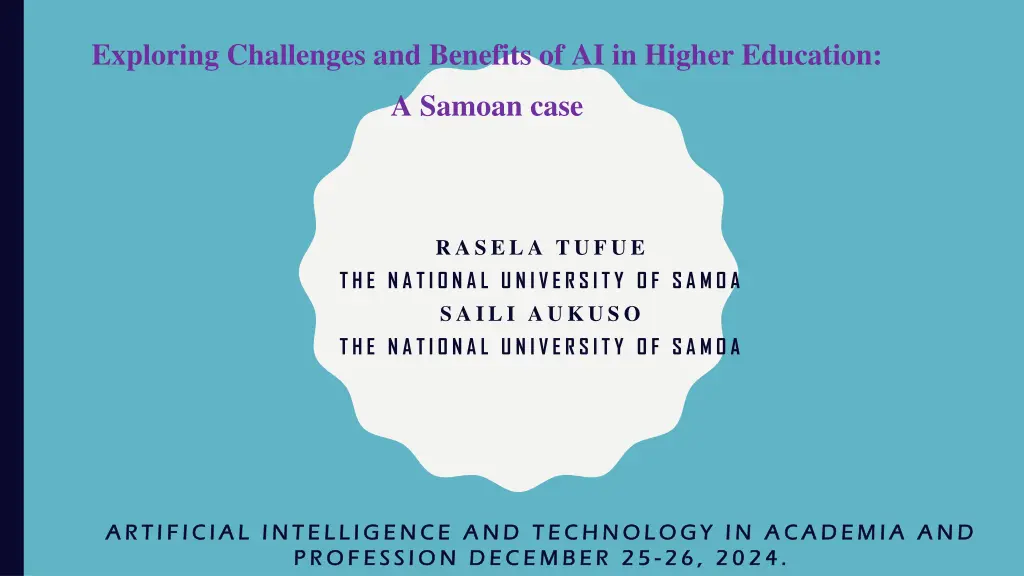
Challenges and Benefits of AI in Higher Education: A Samoan Case Study
Explore the challenges and benefits of integrating AI in higher education, focusing on a Samoan case study. This study delves into the use of AI chatbots, the perspectives of teachers and students on AI in education, and the potential implications of AI on teaching roles. Discover the impact of AI technology on learning processes, including concerns about plagiarism and limitations in educational settings.
Download Presentation

Please find below an Image/Link to download the presentation.
The content on the website is provided AS IS for your information and personal use only. It may not be sold, licensed, or shared on other websites without obtaining consent from the author. If you encounter any issues during the download, it is possible that the publisher has removed the file from their server.
You are allowed to download the files provided on this website for personal or commercial use, subject to the condition that they are used lawfully. All files are the property of their respective owners.
The content on the website is provided AS IS for your information and personal use only. It may not be sold, licensed, or shared on other websites without obtaining consent from the author.
E N D
Presentation Transcript
Exploring Challenges and Benefits of AI in Higher Education: A Samoan case RASELA TUFUE THE N A TION A L U N IVERSITY OF SA MOA SAILI AUKUSO THE N A TION A L U N IVERSITY OF SA MOA A R T I FICIAL I N T EL L IGENC E A N D T EC H N OL OGY I N A C A D EMIA A N D A R T I FICIAL I N T EL L IGENC E A N D T EC H N OL OGY I N A C A D EMIA A N D P R OF ESS ION D EC EM BER 25 P R OF ESS ION D EC EM BER 25 - - 26, 2024. 26, 2024.
INTRODUCTION The rapid integration of technology in classrooms globally is unmistakable especially in the likes of artificial intelligence (AI). Artificial intelligence is the future element of technology, designed to make easier the lives of individuals easier transforming every facet of our social interactions. In education, AI has already considered introducing innovative teaching and learning solutions-which are currently being tested and refined in various contexts (Bostrum, 2017). Although, AI seems to be a promising technological educational tool, it raises crucial questions: What are challenges and benefits of AI in education , especially in higher institutions like universities? Can AI truly replace a teacher? How can technology instill essential human values needed to thrive in society, let alone the critical skills graduates require to succeed in the workplace and beyond? These are questions this paper aims to discuss
STUDY CONTEXT STUDY CONTEXT National University Samoa & the concept AI chatbots to facilitate teaching and learning process. Researchers experiences of GPT Chatbots Teacher trainers' unfamiliarity & limited knowledge of AI (Anecdotal evidence/preliminary observations) Students seemingly familiarity with AI chatbots Researcher concerns about AI Plagiarism (how much of the work students submitted assessments are of their own and how much are AI generated?) AI seem to be beneficial but can be challenging Limited research on AI in Samoa
STUDY AIM(S) Explore views of practicing teachers and teacher trainers regarding the benefits and challenges of using AI (particularly chatbots, in education for both students and educators. To determine the role of AI in the classroom and whether AI can fully replace the classroom teacher.
RESEARCH QUESTIONS What type of AI Chatbots are you well familiar with How do you utilise AI Chatbot as a student/learner/trainer ? What do you see as benefits of AI Chatbots for educational purposes ? What do you view as limitations of AI Chabots for educational purposes? What are your views concerning the idea of AI Chatbots replacing the teacher in the classroom ?
METHODOLOGY The study utilized a qualitative phenomenological approach to gather information using open ended questions 9 practicing teachers in postgraduate education program FOE (NUS) 9Teacher trainers Four open-ended questions in a questionnaire document were used to collect the data(Denzin & Lincoln, 2011) We used the thematic analysis approach by Miles and Huberman (1994) to analyse data using these steps: becoming familiar with the data, generating initial codes, searching for themes, reviewing themes and defining themes.
FINDINGS Table 1. Benefits of AI in Educational Settings Themes Benefits for the teacher learner Subcategories Accessibility /availability Definitions Easy access to information Immediate feedback / Perpetual preparedness AIs instantaneous response Readied support at all times Language development Flexibility Writing and language skills Ability to learn despite the location, time and learner s pace Simplification of concepts Easy information access Improved learning Accessibility Benefits for the teacher trainer Innovating ideas Improve English writing skills Development new ideas Academic writing enhancement Training resources Differentiated instructions Online resources availability Tech-enabled instruction
FINDINGS CONTD Table 2. Challenges of AI in educational Settings Themes Challenges for the teacher learner Sub-categories Intellectual inhibition Definitions Limits thinking capacity Development of passive/lazy learners, dependent mindset, overreliance on AI, AI s misleading information AI limits social skills AI lacks emotions to inspire learners Unreliable information Social isolation Inspirational deficit Data privacy Authenticity verification Cheating / Plagiarism Unreliable information and Historical unawareness Lack of data protection Student cheating Challenges for the teacher trainer Misleading information, Limited knowledge of historical ideas Limited knowledge / understanding of AI Resistant to change Lack of inspiration for personal development Educators lack the desire to learn new tech
Table 3: Comparative Capacities of AI and Human Teachers in Education FINDINGS ON COMPARABLE ROLE OF AI AND CLASSROOM TEACHER Table 3: Comparative Capacities of AI and Human Teachers in Higher Education Themes Subcategories Capacity of AI Capacity of Human Teachers Preference and Emotional Support Authentic Interaction Limited High Emotional Support Role Models Emotional Deficit Human Experience Limited None High Limited High High Low High Cultural and Contextual Sensitivity Cultural Sensitivity Limited High Behavioral Management Limited High Critical Skills and Personal Development Critical Thinking Limited High Creative Development Holistic Development Limited Limited High High Technological Assistance and Limitations Information Interpretation High Limited Supportive Role Programmed Responses Inflexibility Supplementary Tool Classroom Management Individualized Teaching High High High High Limited Limited Limited None Low Limited High High
DISCUSSION AI Opportunities For learners AI support easy access to information, immediate feedback, and the ability to personalize learning experiences (Holmes et al., 2019). This flexibility allows students to learn at their own pace, regardless of time or location, and supports the development of language and writing skills (Williamson & Eynon, 2020). AI simplifies complex concepts, making them more accessible and improving overall learning outcomes (Wang et al., 2022). For teachers, AI support via access to educational resources, fostering the development of innovative teaching strategies, and enhancing writing skills (Holmes et., al 2019). AI offers tools for differentiated instructions (tailored teaching to the diverse needs of their students. AI Challenges AI limit critical thinking and promote dependency among students, leading to a passive learning mindset (Holmes et al., 2019). Reliability of information provided by AI is questioned (Floridi & Cowls, 2019). AI lacks emotional and social aspects of education e.g., social skills devt, inspire /motivate students (Williamson & Eynon, 2020). Data privacy- the need for robust protections to safeguard student information (Slade & Prinsloo, 2013). Teachers challenges - verifying authenticity of student work, and combatting academic dishonesty facilitated by AI tools (Gao et al., 2022). Teacher Resistance to change, limited desire or ability to integrate new technologies into their teaching practice (Holmes et al., 2019).
DISCUSSION CONTD Comparable roles of AI and Teacher Preference for Human Teachers Strong preference for human teachers over AI. Human teachers provide authentic interaction and emotional support. Human teachers - better at building meaningful relationships with students, serving as role models, and offering the kind of emotional support that AI currently cannot replicate (e.g., Holmes et al., 2019). Limitations of AI in Education - emotional deficit and inflexibility. AI's programmed responses lack the spontaneity and adaptability of human teachers, making it less effective in dynamic classroom environments (e.g., Wang et al., 2022). The Role of AI as a Supplementary Tool AI is recognized as a valuable supplementary tool in education. It can assist with information interpretation and provide support in various administrative and instructional tasks. However, AI cannot fully replace human teachers, especially in areas requiring emotional and cultural sensitivity (Williamson & Eynon, 2020).
CONCLUSION The findings underscore the significant benefits of AI in improving learners writing skills and learning as a whole. Additionally the support for trainers in terms of work overload reduction such as grading and marking students assessments as well as resource production. The easy to access aspect of AI is significantly beneficial to both learner and trainer These benefits not withstanding, some concerns were highlighted in connection to inhibiting of cognitive skills which resulted from learners overreliance on AI generated information. Findings also highlighted that AI should not be fully trusted to provide reliable information as it does not have the ability to consistently supply reliable information. However while AI can play a supportive role in education, it cannot replace the essential human elements that teachers provide. Emotional support, cultural sensitivity, critical thinking development, and holistic teaching are areas where human teachers excel and are indispensable. Therefore, the integration of AI in education should focus on enhancing the capabilities of human teachers rather than replacing them. This blended approach can leverage the strengths of both AI and human educators to create a more effective and empathetic learning environment.
LIMITATIONS OF THE STUDY Some limitations of the study are worth noting. First the limited sample of eighteen participants is inadequate to get a fuller picture of the studied phenomenon. Additionally, the focus of the study was on AI in higher institution hence a more inclusive approach considering various educational levels would be a consideration in future, to provide a more robust and comprehensive analysis of AI generating systems.
RECOMMENDATIONS There is a need for policymakers to establish robust data privacy guidelines to protect student information. Institutions like our university should use AI systems that are transparent and explainable. This will help educators and students understand how data is being used and ensure trust in the technology. Educators should be trained to effectively use AI tools and interpret AI- generated data. This training should include understanding the ethical implications and limitations of AI. There is also a need to establish mechanisms to continuously monitor and evaluate the impact of AI on education. This includes ranking students progress and addressing any negative outcomes promptly.
ACKNOWLEDGEMENT We wish to thank the organizers of this conference Artificial Intelligence and Technology in Academia and Profession for the opportunity to share in this virtual forum. FAAFETAI TELE LAVA! MAY GOD BLESS YOU ALL!!!




